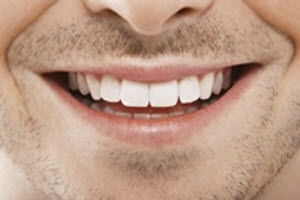Searching for Signs of Disease in Spit
A new study demonstrates for the first time that individuals may have saliva “fingerprints”
Register for free to listen to this article
Listen with Speechify
0:00
5:00
 Diagnosing diseases could get simpler using patients’ unique spit “signatures.”Image Courtesy of: IPGGutenbergUKLtd/iStock/ThinkstockTesting for health conditions usually involves needles, X-rays, and other invasive or uncomfortable measures. To make diagnostics less burdensome for patients, scientists are developing alternatives, looking for disease markers in urine—and even spit. Now a study, appearing in ACS’ Journal of Proteome Research, demonstrates for the first time that individuals may have saliva “fingerprints.” The finding suggests that identifying changes in these baseline fingerprints could someday be a reliable way to detect disease.
Diagnosing diseases could get simpler using patients’ unique spit “signatures.”Image Courtesy of: IPGGutenbergUKLtd/iStock/ThinkstockTesting for health conditions usually involves needles, X-rays, and other invasive or uncomfortable measures. To make diagnostics less burdensome for patients, scientists are developing alternatives, looking for disease markers in urine—and even spit. Now a study, appearing in ACS’ Journal of Proteome Research, demonstrates for the first time that individuals may have saliva “fingerprints.” The finding suggests that identifying changes in these baseline fingerprints could someday be a reliable way to detect disease.In the search for non-invasive and less stress-inducing ways to detect disease, much effort has focused on urine testing. Individuals’ urine samples have specific metabolic signatures that can become altered when a person develops a health problem. But compounds in urine can also vary depending on factors such as diet and environment. Saliva has similar potential as an easy-to-access fluid that changes in response to health conditions, but could be less affected by diet and the environment. Paola Turano, Kurt Zatloukal, and colleagues wanted to investigate how reliable this route might be.
The researchers sampled saliva and urine from 23 healthy volunteers multiple times a day over ten days. The molecular signatures of saliva and urine were distinct and consistent for each participant. But profiles from spit samples changed less due to dietary variations than those from urine. Although longer-term research would be needed, this initial work on saliva fingerprints suggests that they could be useful in searching for signs of disease, say the researchers.
The authors acknowledge support from Ente Cassa di Risparmio di Firenze, the Christian Doppler Laboratory for Biospecimen and Biobanking Technologies and the Fondazione Veronesi.
